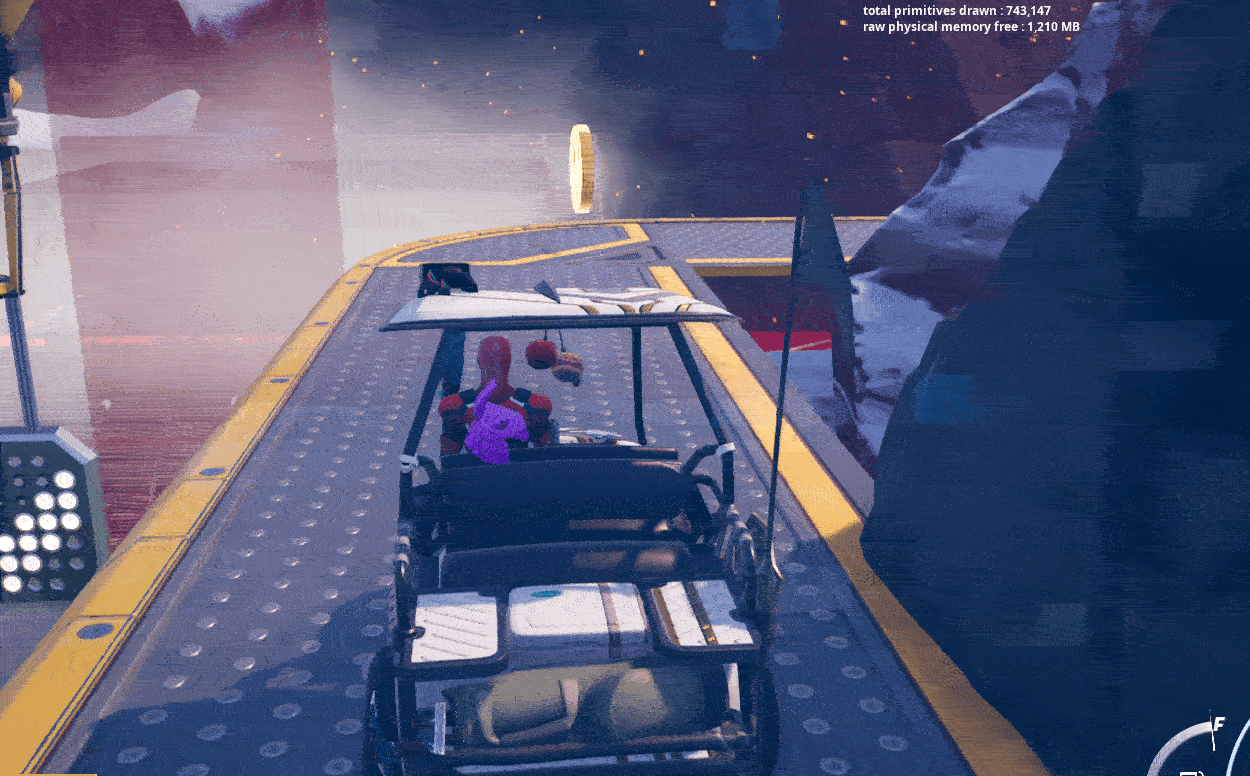
Fortnite Triathlon
Level Designer | Solo project | Unreal Engine for Fortnite PUBLISHED
WHAT DID I DO?
I learned Unreal Engine for Fortnite (UEFN)
-
Landscaping Tools
-
Accolades, Devices, Events, & Functions
-
Island Settings
-
Revision Control
I created three sections for Fortnite mechanics
-
Platforming
-
Shooting
-
Building & Driving

Gameplay: Collecting XP Award Accolades
PLANNING
I used Flow Charts to plan out skill challenges for each mechanic and how they flow together
-
Each shape represents a type of engagement
-
Skill Challenge
-
Combat
-
Exploration
-
Cutscene
-
-
I note intended difficulty and relative duration of each skill challenge
-
I plan the Golden Path and where gameplay elements flow along it

Flow Chart for the first section


Mood boards for each section

Mood boards collect references for theming that I use during Set Decoration
-
I think about how decorations could fit into the space while blocking things out
-
I think about how skill challenges would make sense within a specific theme
PROTOTYPING
I start by creating very basic elements of a level, playtesting them, and iterating on each element
-
Playtesting shows how long it takes to move through each gameplay element
-
I compare this to my planning documents
-
-
This is when I think about health pickups, checkpoints, damage done to the player, and pacing of each section of the level

Revision history of the first skill challenge

Platforming: the final version of the first Damage Zone

Build & Drive: A driving challenge to collect building materials

Each section had different issues to think about
-
For platforming, I had to consider the timing between traps and how quickly players can get through Damage Zones
-
I averaged playtested times from experienced and new players
-
-
For building and driving, I had to account for mistakes when building and control difficulty
-
I added extra building materials
-
Motorbikes were hard to control, so I removed them in favor of Karts
-
-
For shooting, I tested the affordances of different weapons and thought of how to challenge players on those affordances
-
Pistol sections challenge quick-draw
-
Shotgun sections challenge shot spread
-
Sniper sections challenge bullet drop
-
Shooting: a target designed to test quick-draw skills
ITERATING

Tutorializing Mantling for players that don't know how to
My first pass involves guiding players along the golden path, especially in problematic areas
-
My flow charts give me a starting point: guide players between each "shape" of gameplay
-
Playtesting teaches me where players need more guidance than I initially expected
In my second pass, I reward exploration and implement optional difficulty spikes
-
Playtesting shows where players often go
-
I put collectibles where players expect to find hidden collectibles and in cold spots
-
-
I use collectibles to increase the difficulty of skill challenges, for players who want it
-
"Easy" mode is straightforward to navigate
-
"Hard" mode is difficult to find all collectibles without dying in skill challenge
-
-
In UEFN, I used Accolade Functions to reward XP when collecting coins, reaching checkpoints, and completing a level section

Gold guides players to the next building material

Gameplay: Collecting XP Award Accolades

Section 1 shows pirates looting abandoned ruins

Shot: Player goes through jaws of a mysterious skeleton

Once I'm confident in the level's design I do a final pass for environmental storytelling.
-
Each mood board supports an implicit narrative
-
Section 1: pirates looting abandoned ruins
-
Section 2: A race in the mountains
-
Section 3: A shooting gallery
-
-
I enjoy using composed shots to transition between skill challenges
-
especially those that increase in difficulty
-
-
In UEFN, I used two styles of Props and Prefabs that pair well together
-
Section 1 uses Wilds and Sunny Steps
-
Final shot reveals a throne surrounded by massive bones